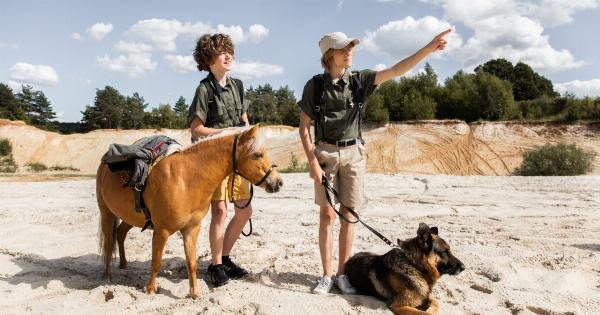Dogs have long been regarded as our trusted companions, but did you know that their noses hold a remarkable ability to detect diseases? With the recent outbreak of the Koronovios virus, scientists have turned to man’s best friend to aid in the fight against this deadly disease. In this article, we will explore the incredible capabilities of dogs’ noses and how they are being utilized in the detection and prevention of the Koronovios virus.
The Power of a Dog’s Nose
It is no secret that dogs have an exceptional sense of smell. Their noses contain up to 300 million scent receptors, compared to a meager 6 million in humans.
This superiority in olfactory capabilities allows them to detect scents up to 100,000 times better than us. With such an extraordinary sense of smell, it is no wonder that dogs have been used in various industries, including search and rescue, narcotics detection, and even as service animals for individuals with disabilities.
Dogs as Medical Detectives
Scientists have long been aware of dogs’ ability to detect certain diseases, including cancer and diabetes, through their sense of smell.
The specialized training these dogs undergo enables them to identify specific biomarkers present in the breath, urine, or tissue samples of affected individuals. In the case of the Koronovios virus, dogs have been trained to detect the unique scent associated with the disease.
The Koronovios Virus: A Global Threat
The Koronovios virus, also known as KV, is a highly contagious respiratory illness that has rapidly spread across the globe.
With symptoms ranging from mild cold-like symptoms to severe pneumonia and respiratory failure, KV has claimed thousands of lives. As efforts to contain the virus intensify, scientists are exploring every possible avenue to detect and prevent its spread.
Training Dogs in the Fight Against KV
Trainers working alongside medical professionals have developed a training regimen to teach dogs to detect the distinct odor of the Koronovios virus.
This is done by using samples collected from infected individuals and utilizing positive reinforcement techniques to associate the scent of the virus with a reward. These trained dogs are then deployed to airports, train stations, and other public areas to screen individuals for potential infection.
Canine Detection: A Reliable Tool
Recent studies have shown that dogs trained to detect the Koronovios virus have a remarkably high accuracy rate.
In a study conducted in a busy airport, these specially trained dogs were able to identify infected individuals with an astonishing 94% accuracy. This highlights the potential value of canine detection as a reliable and non-invasive method in identifying individuals infected with KV.
Benefits of Canine Detection
Utilizing dogs in the detection of the Koronovios virus offers several advantages. Firstly, their exceptional sense of smell allows for the identification of infected individuals quickly and efficiently, potentially preventing further transmission.
Furthermore, the non-invasive nature of canine detection eliminates the need for invasive tests, resulting in a more comfortable and stress-free experience for individuals being screened. Finally, dogs’ ability to detect the virus at an early stage can aid in prompt medical intervention, leading to better treatment outcomes.
Challenges Faced
While the use of dogs in the detection of the Koronovios virus has shown promising results, there are also challenges associated with this approach. Firstly, training dogs to identify the virus requires time, resources, and specialized expertise.
Additionally, the availability of trained dogs can be limited, making it difficult to deploy them widely. Finally, factors such as environmental conditions and distractions in public spaces can affect the accuracy of canine detection.
Expanding the Use of Canine Detection
The success of canine detection in combating the Koronovios virus has sparked interest in using dogs to identify other diseases as well.
Research is underway to explore the potential of utilizing their remarkable olfactory capabilities in the detection of various cancers, malaria, Parkinson’s disease, and even bacterial infections such as Clostridium difficile. If successful, this could revolutionize the field of disease detection and provide a valuable tool in early diagnosis.
Conclusion
The utilization of dogs in the fight against the Koronovios virus highlights the incredible capabilities of their noses.
Their exceptional sense of smell, combined with specialized training, has proven to be a valuable asset in the detection and prevention of this global threat. While challenges exist, the success of canine detection offers hope for the future of disease detection and prevention.



























